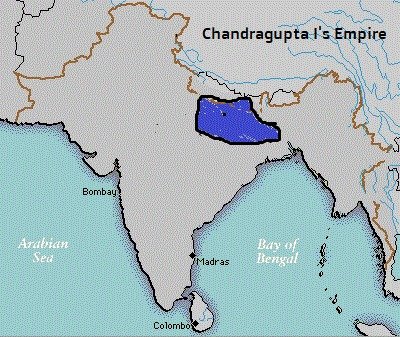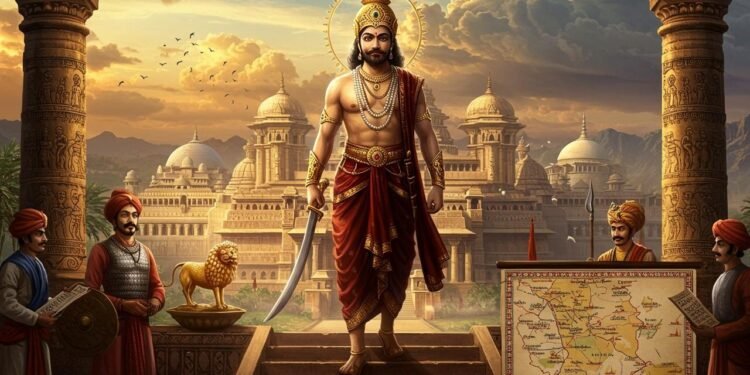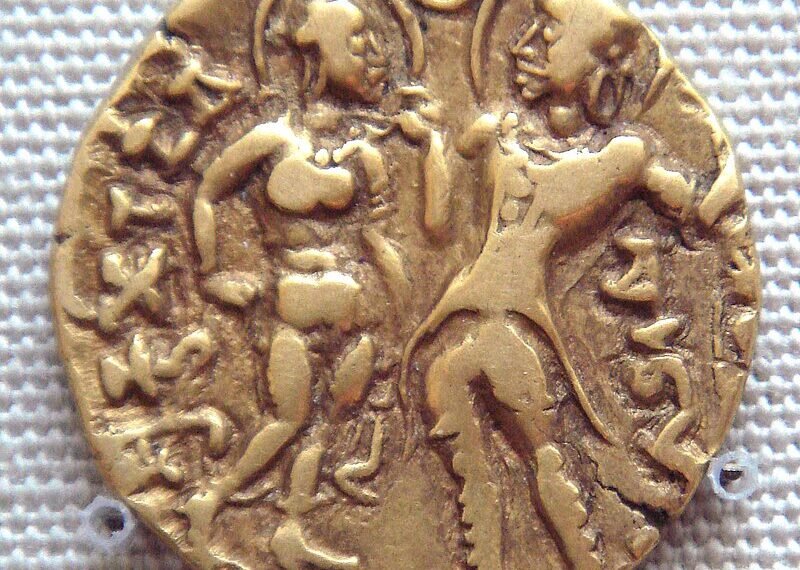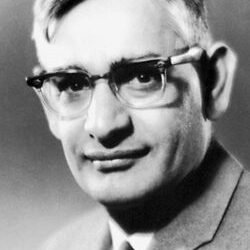Introduction
Chandragupta I (c. 319–334 CE) inaugurated the Gupta era and transformed a regional house into an imperial power, styling himself Maharajadhiraja and laying the political base in Magadha–Prayaga–Saketa through conquest and a pivotal Lichchhavi alliance.

The Lichchhavi alliance
His marriage to the Lichchhavi princess Kumaradevi enhanced Gupta prestige and likely integrated Lichchhavi power centers into the Gupta orbit; coin types bearing both names and later eulogies underscore the alliance’s dynastic and territorial significance. While the precise seat of Kumaradevi’s Lichchhavis (Vaishali vs. Nepal) is debated, historians converge that the union materially strengthened Chandragupta’s position and succession through their son Samudragupta.
Territorial consolidation
Using Puranic hints and Samudragupta’s later Allahabad Pillar as indirect frames, scholars place Chandragupta’s core across Bihar and parts of eastern–central Uttar Pradesh, including Magadha, Prayaga, and Saketa, with Bengal fringes contested among interpretations. The Maharajadhiraja title and absence of some northern Bengal polities in Samudragupta’s conquest list imply Chandragupta handed a substantially enlarged heartland to his heir.
Court and titulature
Imperial claim: Adoption of Maharajadhiraja signaled a move from chiefship to paramountcy among Ganga‑valley polities and set the tone for Gupta royal ideology.
Numismatic messaging: The “Kumaradevi–Chandragupta” coinage type projects joint legitimacy, a rare early instance of a queen’s explicit appearance on Gupta issues to broadcast alliance capital.
Governance foundations
Though fewer inscriptions survive from his reign, later Gupta administrative tiers—bhukti (province) under Uparika, vishaya (district) under Vishayapati/Ayukta, and linkage via Kumaramatyas—are often traced back to early Gupta consolidation begun under Chandragupta I. Matrimonial diplomacy alongside force set a template Samudragupta scaled into tributary networks recorded in the Prayaga‑Prashasti.
Diplomacy and succession
By securing the Lichchhavi connection and stabilizing the middle Ganga corridor, Chandragupta positioned Samudragupta to pivot rapidly into multi‑front campaigns—an intergenerational strategy visible in the smooth transition and subsequent imperial surge. The Gupta era epoch (c. 319–320 CE) is commonly linked to his accession, anchoring court chronology and claims of renewed kingship.
Historical debates
Extent in Bengal: Reconstructions vary from Allahabad‑to‑Ganga‑in‑Bengal to more conservative Bihar–UP cores, reflecting uncertainties in correlating later conquest lists backward to inherited domains.
Lichchhavi seat: Vaishali identification competes with Nepal traditions; the alliance’s practical effect—prestige, manpower, and passage rights—matters more than the exact origin point.
Why his reign matters
Foundation builder: He converted Gupta status into recognized paramountcy, mapped a coherent heartland, and pioneered alliance‑coin messaging that legitimized succession.
Strategic template: Mixed tools—marriage, selective annexation, symbolic titulature—became hallmarks of Gupta statecraft that enabled Samudragupta’s rapid expansion.

A gold coin depicting Queen Kumaradevi and King Chandragupta I | Source: Wikipedia
Quick anchors
Dates and title: c. 319–334 CE; first Gupta to assume Maharajadhiraja.
Alliance: Marriage to Kumaradevi of the Lichchhavis; joint‑name coinage.
Core region: Magadha–Prayaga–Saketa, with Bihar and parts of UP as the nucleus.
Conclusion
Chandragupta I’s brief but decisive reign fused a prestige alliance, imperial titulature, and Ganga‑valley consolidation—launching the Gupta era and handing Samudragupta the secure platform from which a classical Indian empire would rapidly rise.





